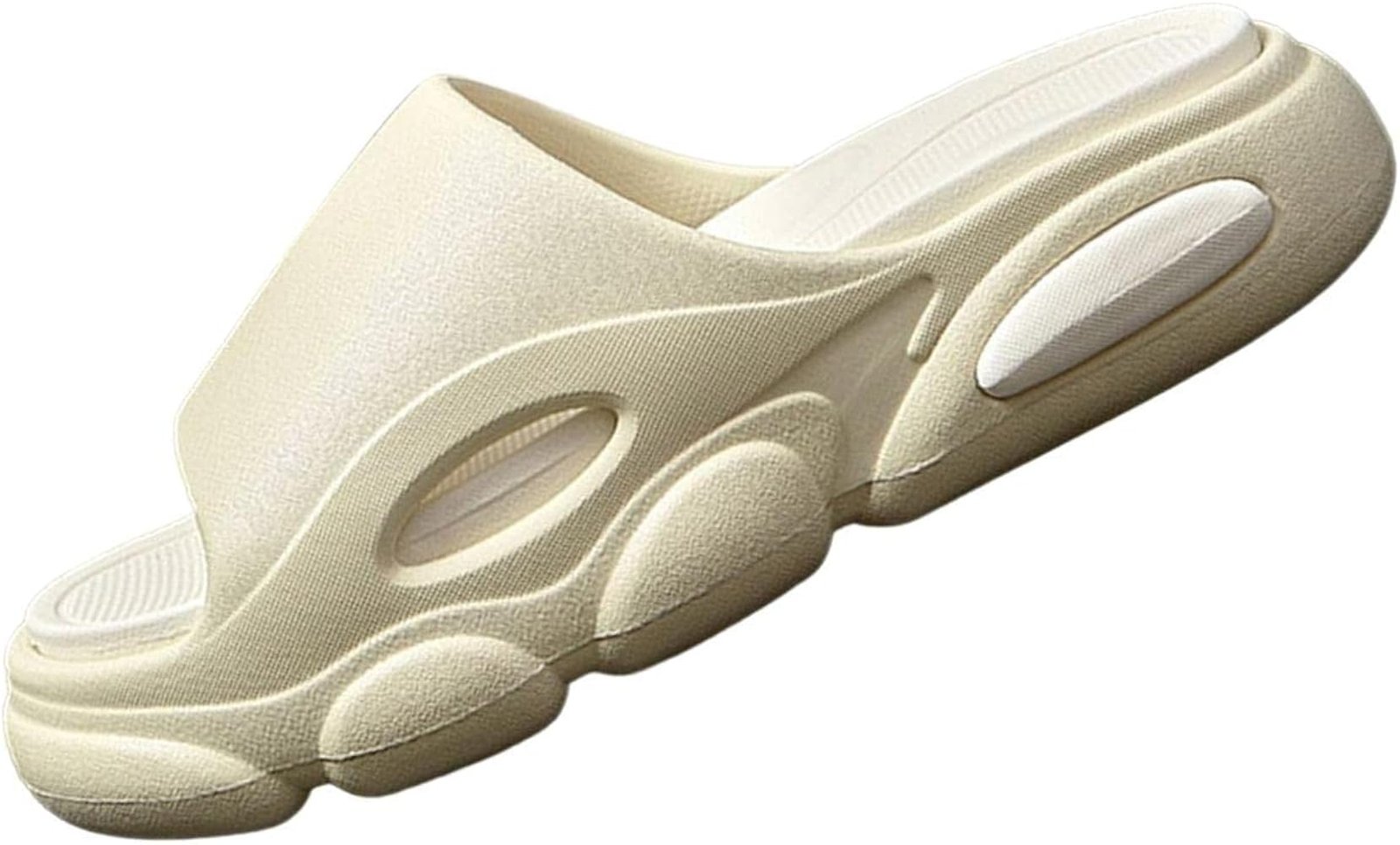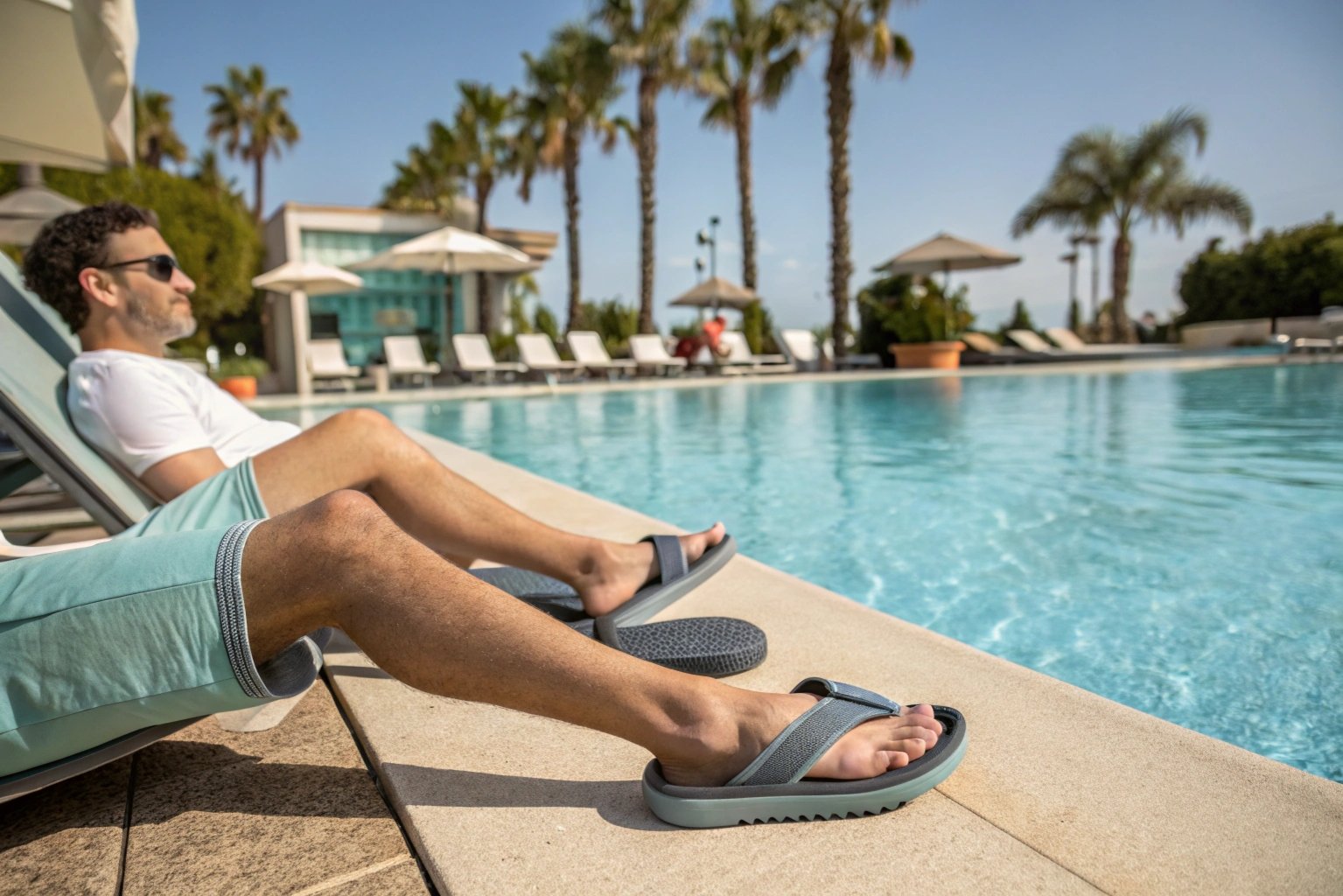It’s annoying when slippers make your feet sweat. Let’s find out how to choose the right breathable footwear.
Plastic slippers can be identified as breathable by examining the material’s porosity, design, and ventilation features. Testing these elements ensures comfort and optimal airflow, preventing sweat accumulation.

Great slippers keep your feet fresh all day, avoiding odors and dampness. Let’s dive into the aspects that make slippers breathable.
What makes a slipper breathable?
Sweaty feet during warm days can be uncomfortable. Having breathable slippers can relieve this discomfort.
Breathable slippers include materials like EVA with perforations, mesh, or open designs that allow air circulation. These features prevent moisture buildup, keeping feet dry and comfortable.

To understand slipper breathability, consider the design’s ability to facilitate airflow. Material choice is crucial; EVA is popular for its lightweight and breathable properties. It often includes perforations or mesh to enhance air circulation. These elements reduce moisture, providing comfort. Look closely at design details. Open structures improve ventilation, promoting freshness. Understanding these factors ensures you select slippers that are not just functional but also comfortable, reducing foot sweat efficiently.
How do pores affect slipper breathability?
It’s frustrating wearing slippers that make your feet sweat. Let’s figure out how pores impact breathability.
Slippers with numerous pores or perforations enhance breathability through increased airflow passages, reducing heat and moisture accumulation. More pores mean cooler and drier feet.

Evaluating slipper breathability often involves checking for pores in the material. Increased porosity facilitates airflow, leading to cooler feet. The perfect balance involves enough pores for air passage without compromising structure. This is especially true for EVA slippers, which naturally include perforations for enhanced breathing. Pores offer pathways for heat dissipation, reducing discomfort from excess warmth. Thus, consider pores as key when selecting breathable slippers for long-lasting comfort, especially during summer.
What role does slipper design play in breathability?
Uncomfortable slippers can ruin your day. Let’s uncover how design contributes to breathability.
Slipper design impacts breathability with open structures, cut-outs, or strategically placed ventilation holes. These elements improve airflow, ensuring feet stay dry and cool.

Examining slipper design is essential to assess breathability. Open designs facilitate sufficient air circulation, effective in reducing sweat buildup. Minimalistic approaches like cut-outs or holes further enhance airflow. Strategically placed ventilation areas impact overall comfort positively, especially during hot weather. Focus on these factors when choosing slippers to ensure they promote adequate airflow for dryer feet. This is crucial in maintaining foot hygiene, avoiding unwanted odors and dampness through intelligent slipper design.
Conclusion
Understanding material, design, and structure ensures breathable, comfortable slippers that keep your feet dry and fresh.

